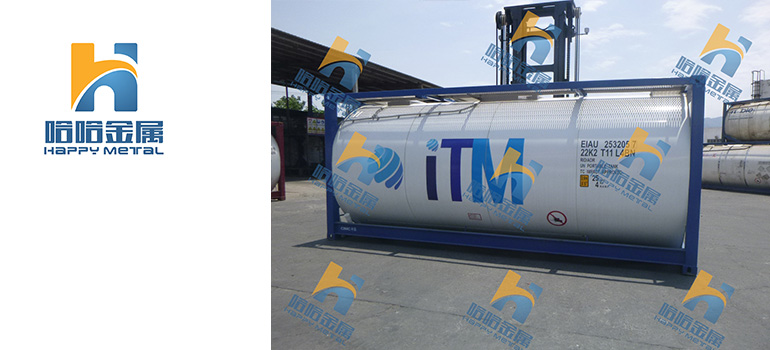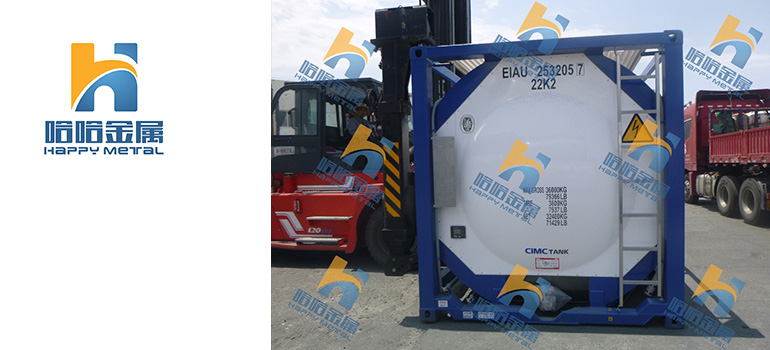Summary:
Sodium Methylate Solution Handling: Ensuring Safety and Efficiency
What is Sodium Methylate Solution?
Importance of Proper Handling Procedures
Potential Hazards Associated with Sodium Methylate Solution
Best Practices for Efficient Sodium Methylate Solution Handling
What is Sodium Methylate Solution?
Sodium methylate solution, also known as sodium methoxide, is a chemical compound composed of sodium (Na) ions and methylate (CH3O-) ions. It is typically dissolved in methanol (CH3OH), although it can also be dissolved in other alcohols. This solution is highly alkaline and reactive.
Sodium methylate is commonly used as a strong base in various chemical processes, including biodiesel production, pharmaceutical manufacturing, and organic synthesis. It serves as a catalyst in many reactions, facilitating chemical transformations by initiating or accelerating the reaction rate.
Due to its highly reactive nature, sodium methylate solution must be handled with caution. It is corrosive to skin and tissue and can cause severe burns upon contact. Additionally, it poses risks of fire and explosion if mishandled or exposed to certain conditions, such as moisture or incompatible materials.
In industrial settings, sodium methylate solution is stored and handled in specialized containers under controlled conditions to minimize risks to personnel and the environment. Proper safety protocols, including the use of personal protective equipment (PPE) and adherence to handling procedures, are essential to ensure safe use and minimize potential hazards associated with this chemical compound.
Importance of Proper Handling Procedures

Proper handling procedures for sodium methylate solution are of paramount importance due to the hazardous nature of this chemical compound. Here’s why ensuring correct handling procedures is crucial:
Safety of Personnel: Sodium methylate solution is highly reactive and corrosive. Contact with skin or eyes can cause severe burns, irritation, or even permanent damage. Inhaling its vapors or mist can lead to respiratory issues. Proper handling procedures, including wearing appropriate personal protective equipment (PPE) such as gloves, goggles, and respiratory protection, are essential to protect the health and safety of personnel working with this substance.
Prevention of Accidents: Mishandling sodium methylate solution can result in accidents such as spills, leaks, or splashes, which can lead to injuries or property damage. By following proper handling procedures, including using designated containers, securing storage areas, and implementing spill containment measures, the risk of accidents can be minimized.
Environmental Protection: Sodium methylate solution poses risks not only to human health but also to the environment. Spills or improper disposal of this substance can contaminate soil, waterways, and groundwater, causing harm to ecosystems and wildlife. Proper handling procedures, including containment and cleanup protocols, are essential to prevent environmental pollution and minimize the ecological impact of sodium methylate solution.
Regulatory Compliance: Many regulatory agencies have specific requirements and regulations governing the handling, storage, and disposal of hazardous chemicals like sodium methylate solution. Adhering to these regulations is not only necessary to ensure the safety of personnel and the environment but also to maintain compliance with legal requirements and avoid potential fines or penalties.
Maintaining Product Integrity: Proper handling procedures help maintain the integrity and effectiveness of sodium methylate solution for its intended applications. Contamination or degradation due to improper handling can compromise the quality and performance of the product, leading to undesirable outcomes in chemical processes or product manufacturing.
Overall, by implementing and adhering to proper handling procedures, organizations can safeguard the health and safety of their personnel, protect the environment, comply with regulations, and maintain the integrity of sodium methylate solution for optimal performance in industrial applications.
Potential Hazards Associated with Sodium Methylate Solution
Sodium methylate solution presents several potential hazards due to its highly reactive and corrosive nature. Understanding these hazards is crucial for ensuring the safety of personnel and the environment. Here are some of the key hazards associated with sodium methylate solution:
Corrosive Properties: Sodium methylate solution is highly corrosive to skin, eyes, and mucous membranes. Direct contact with the solution can cause severe chemical burns, irritation, and tissue damage. Even brief exposure can result in significant injuries, making proper personal protective equipment (PPE) essential when handling this substance.
Inhalation Hazards: Inhalation of sodium methylate vapors or aerosols can irritate the respiratory tract and cause respiratory distress. Prolonged exposure to high concentrations may lead to more severe respiratory issues. Adequate ventilation and respiratory protection are necessary to minimize inhalation risks in areas where sodium methylate solution is used or stored.
Fire and Explosion Risks: Sodium methylate is reactive with water and many other substances, including air and certain metals. It can generate flammable hydrogen gas when exposed to moisture or water. Additionally, it may react violently with incompatible materials, leading to fire or explosion hazards. Proper storage, handling, and segregation from incompatible substances are essential to prevent these risks.
Reactivity with Organic Materials: Sodium methylate solution reacts vigorously with organic compounds, including fats, oils, and other organic solvents. This reactivity can lead to spontaneous ignition or exothermic reactions, especially in the presence of heat or moisture. Avoiding contact with organic materials and ensuring proper containment and segregation are critical to prevent accidental reactions.
Environmental Hazards: Spills or releases of sodium methylate solution can result in environmental contamination, posing risks to soil, waterways, and aquatic life. The alkaline nature of the solution can disrupt ecological balance and harm sensitive ecosystems. Prompt containment and cleanup of spills, as well as proper disposal procedures, are necessary to mitigate environmental hazards.
Storage and Handling Challenges: Due to its reactive nature, sodium methylate solution requires specialized storage and handling practices. It should be stored in tightly sealed containers made of compatible materials, away from heat, moisture, and incompatible substances. Handling should be done with care to minimize the risk of spills or exposure.
Overall, awareness of the potential hazards associated with sodium methylate solution is essential for implementing effective safety measures and minimizing risks in industrial settings. Proper training, risk assessments, and precautionary measures are crucial to protect personnel, the environment, and property from the hazards posed by this chemical compound.
Best Practices for Efficient Sodium Methylate Solution Handling
Efficient handling of sodium methylate solution is vital for ensuring both safety and productivity in industrial settings. Implementing best practices can help minimize risks and optimize workflow. Here are some key best practices for efficient sodium methylate solution handling:
Proper Training and Education: Ensure that personnel involved in handling sodium methylate solution receive comprehensive training on the properties of the chemical, safe handling procedures, emergency response protocols, and the use of personal protective equipment (PPE). Well-trained employees are better equipped to handle the substance safely and efficiently.
Use of Personal Protective Equipment (PPE): Require all personnel to wear appropriate PPE, including chemical-resistant gloves, safety goggles, face shields, and protective clothing, when handling sodium methylate solution. PPE acts as a barrier against chemical exposure and reduces the risk of injuries from spills or splashes.
Strict Adherence to Standard Operating Procedures (SOPs): Develop and enforce clear SOPs for handling sodium methylate solution, covering procedures for mixing, dilution, transfer, storage, and disposal. Consistently following established SOPs helps maintain safety standards and ensures uniformity in handling practices across different tasks and personnel.
Proper Mixing and Dilution Techniques: Follow recommended guidelines for mixing and diluting sodium methylate solution to achieve the desired concentration safely. Use appropriate equipment and containers designed for handling corrosive chemicals, and avoid excessive agitation or splashing during the mixing process to prevent spills or exposure.
Equipment Maintenance and Calibration: Regularly inspect, maintain, and calibrate equipment used for handling sodium methylate solution, such as pumps, valves, and mixing tanks, to ensure proper functioning and accuracy. Faulty or malfunctioning equipment can compromise safety and efficiency, leading to potential hazards or process delays.
Optimizing Workflow for Efficiency: Streamline workflow processes to minimize downtime and maximize efficiency in sodium methylate solution handling operations. This may involve optimizing equipment layout, scheduling regular maintenance activities during off-peak hours, and implementing batch processing techniques to handle larger volumes more efficiently.
Effective Communication and Coordination: Promote clear communication and coordination among team members involved in sodium methylate solution handling tasks. Ensure that everyone understands their roles and responsibilities, and encourage reporting of any safety concerns or incidents promptly to facilitate timely resolution and prevent recurrence.
Emergency Preparedness and Response: Develop and regularly review emergency response plans for handling spills, leaks, or other accidents involving sodium methylate solution. Provide appropriate training and resources for personnel to respond effectively to emergencies, including access to emergency eyewash stations, safety showers, spill containment kits, and first aid supplies.
Documentation and Record-Keeping: Maintain accurate records of sodium methylate solution handling activities, including quantities used, batch numbers, dates, and personnel involved. Documenting these details helps track inventory, monitor consumption rates, identify trends, and ensure compliance with regulatory requirements.
Continuous Improvement and Feedback: Encourage feedback from employees involved in sodium methylate solution handling to identify opportunities for improvement. Regularly review procedures, solicit input from stakeholders, and implement changes as needed to enhance safety, efficiency, and overall performance.
By incorporating these best practices into sodium methylate solution handling processes, organizations can mitigate risks, improve operational efficiency, and promote a culture of safety and responsibility in the workplace.




